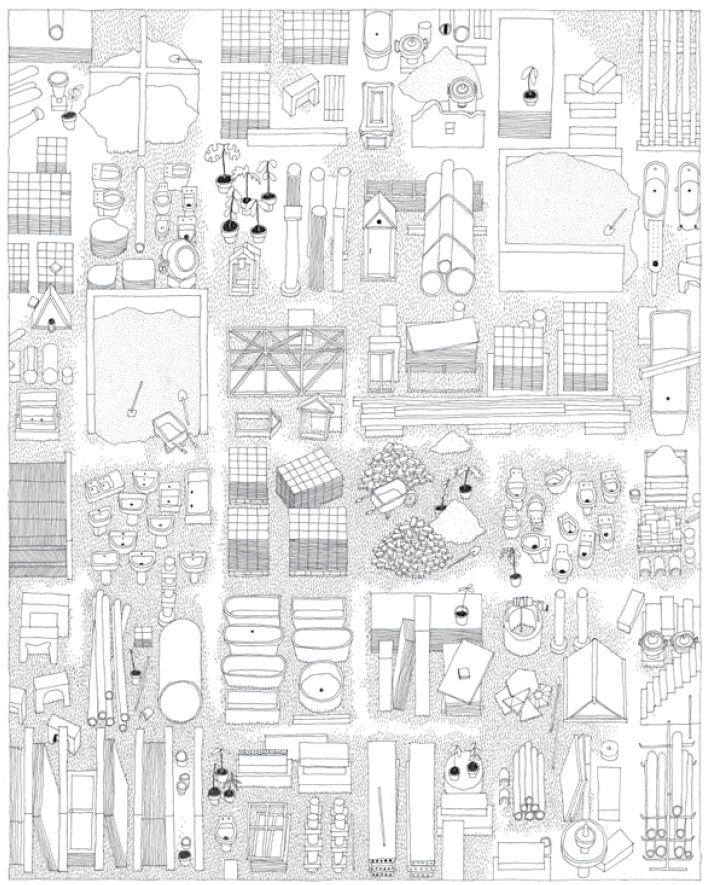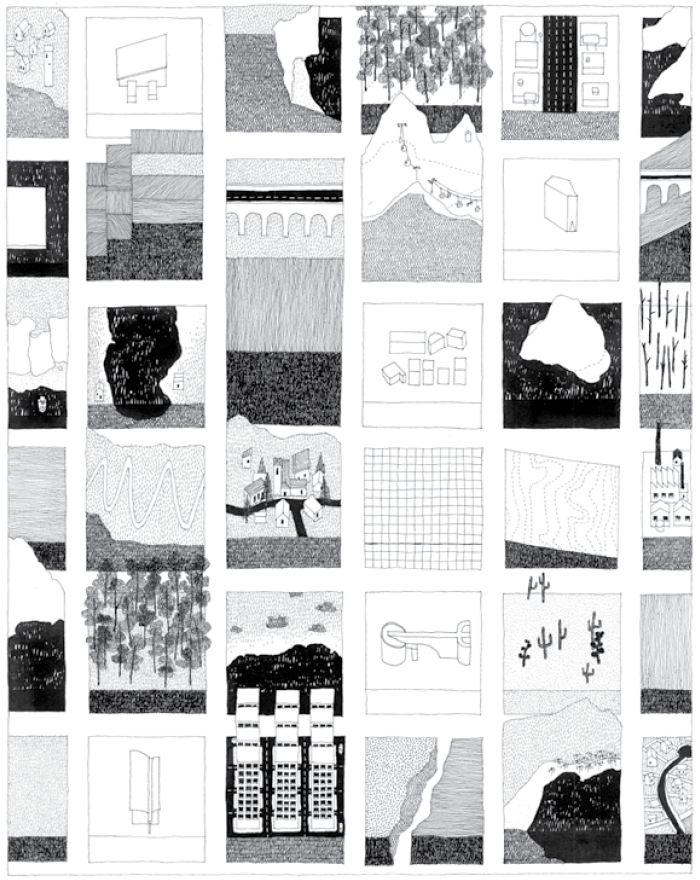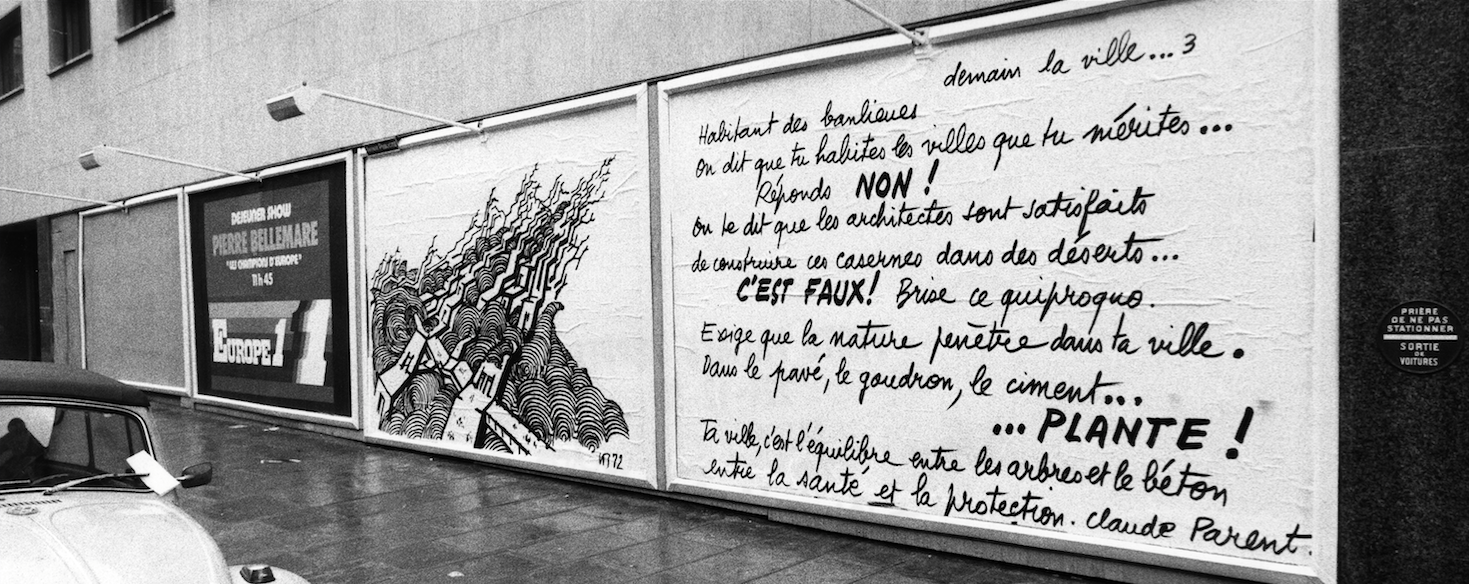Architecture and climate: beyond the crisis, towards a collective narrative
AA proposes to read the article by Léa Mosconi, published in the issue No.411 of AA dedicated to the Climate, about the links between architecture and climate. Indeed, the 1960s were the years of solar and bioclimatic architecture. The 2000s recorded an increase in the number of standards and certifications in favour of energy performance. Fifteen years later, architects have become aware that the world is embarked on a new climate system.

In 1965, south-east of the Colorado desert: four American students have bought an 8 ha plot of land and founded the Drop City community. Made up of geodesic domes built with recycled materials, the community came from a generation’s desire to liberate itself from a normative model of life. Architecture also became a testing ground in which to think through the climate and energy question in relation to the environment. This emulation ran from the 1960s to the 1970s and resulted in the emergence of solar architecture, followed by bioclimatic architecture.
Energy performance and alternative attitudes
Two decades later, the energy theme suddenly emerged again among architects. The various world summits on climate, the media coverage of sustainable development, the perception of an environmental crisis, which the IPCC (Intergovernmental Panel on Climate Change), created in 1988, was trying to understand, contributed to turning energy performance into a crucial challenge. Standards, certifications and political incitement, from the Barnier law in 1995 to the french High Environmental Quality (HQE, 1990-1996) and Passivhaus (1996) certificates, made energy a key issue in construction. This injunction contributed to making the use of many systems more widespread, leaving a mark on both buildings and the city. Exterior insulation became more prevalent, there was an increase in solar panels, and building ventilation became more complex.
At the same time and relatively quietly, alternative attitudes and different approaches to the environment emerged. On one hand, thought was given to the materials, their nature and their re-use. The CRATerre group, with their raw earth creations, and Patrick Bouchain, with his work on recovery (the Lieu Unique, 1999), are representatives of this movement. On the other hand, Peter Zumthor (Thermal baths in Vals, 1996), Glenn Murcutt (Simpson-Lee House, 1994), Mario Botta (Santa-Maria degli Angeli chapel, 1996) and more widely the architects of critical regionalism, contributed to feeding thoughts on the dialogue between the building and its environment, whether it is topographical, climatic or cultural. In France, architects such as Françoise-Hélène Jourda, Gilles Perraudin, and Philippe Madec focused their projects on climate and energy. These different approaches to material, environment and climate will become more and more popular in the years 2000.
They will influence a young generation of architects, such as Boris Bouchet, SOA and the Encore Heureux collective. Furthermore, although we might find the frantic race to achieve energy performance bewildering, its foothold in regulations – with the increasing requirements of the French thermal regulations RT 2000, 2005 and 2012 – and its coverage in the media contributed, both in terms of how architecture is practised and in terms of teaching and research, to a more sweeping world reflection on the environment, in this same decade.

Man, a geological force
In the 2010s, the emergence of the anthropocene theory in the field of architecture resulted in environmental fears and considerations converging in the form of a collective narrative. Anthropocene, a notion which appeared in the scientific community in the early 2000, considers man to be a geological dominant force whose action on his environment is comparable in magnitude and temporality to telluric forces. This theory, conveying a narrative with the aesthetics of the sublime, takes us from the idea of an environmental crisis to that of a “new climate system”, as Bruno Latour claims in Face à Gaïa (La Découverte publishing house, 2015). As emphasized by the historians Christophe Bonneuil and Jean-Baptiste Fressoz in L’Événement anthropocène (Le Seuil publishing house, 2014): “To think anthropocene, is to abandon the hope of exiting from this crisis. The crisis is behind us, in this brief and exceptional time of industrial growth. Anthropocene is a point of no return. We must therefore learn to survive”. The globalization of the environmental attitude, the assertion of obvious architectural positions on climate, such as those of Duncan Lewis or Glenn Murcutt, and the dissemination of the anthropocene theory in the field of architecture has instigated an increasing number of architects to move away from a performance approach, to question their role in greater depth faced with the scope of climate change.
The question of reuse, for example, is given structure in the views of dozens of young collectives. The Belgians, Rotor, who are looked on as pioneers, focus on these issues with conviction, to the point of opening a cooperative for the dismantling and sale of reusable materials, taken from buildings under demolition. Building with available materials is also becoming a strong principle among many architects. An increasing number of them have taken over local construction techniques using local materials, such as Diébédo Francis Kéré, in Burkina Faso, Studio Mumbai in India and Wang Shu in China. Furthermore, reflection on architecture and climate is becoming more complex. Architects such as Philippe Rahm and Lacaton & Vassal have made the climate key to their projects which question both the use of space and the way it is inhabited.
Although the architectural community faced the debate on the environment, at the end of the 1990s, through the prism of energy performance, in these last two decades we have seen rising a collective narrative, questioning the foundations of architecture’s relationship with its environment. The experiments that have stemmed from this question the way in which we build, the techniques we use, the site use, the energy we use and the interactions we create with climate and the environment. This research is being followed up by the young generation, with the arms of their elders and the same fervour that drove the students who built Drop City, nearly half a century ago.
Léa Mosconi is teacher at Ensa Paris-Malaquais and doctoral student in architecture.


